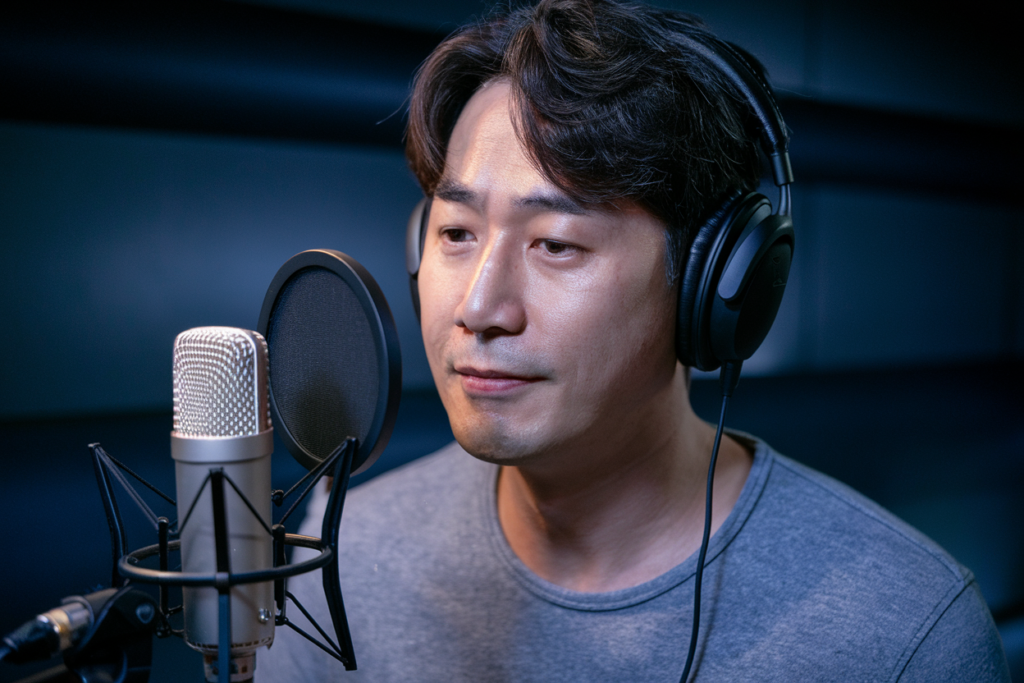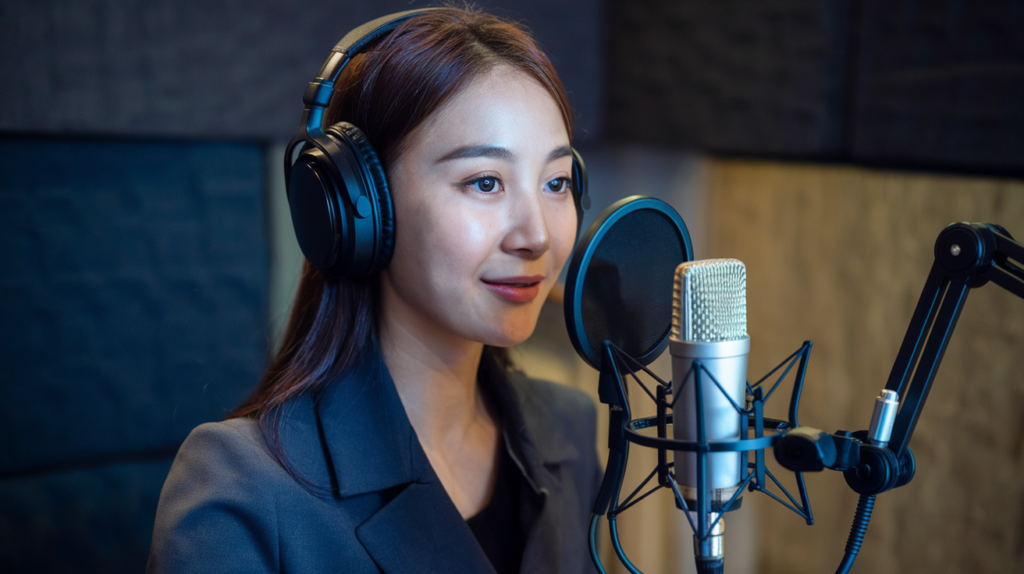Key Takeaways
- Diversity of Accents: Korean accents vary significantly by region, reflecting the rich cultural and historical tapestry of the language.
- Major Dialects: Key dialects include Gyeonggi (standard), Gyeongsang (energetic), and Jeolla (melodic), each influencing pronunciation and vocabulary uniquely.
- Geographic Influence: Geographic features like mountains and rivers contribute to the development of distinct regional accents over time.
- Social Factors: Elements such as education, socioeconomic status, and age play crucial roles in shaping how individuals speak within their communities.
- Impact on Communication: Understanding regional accents is vital for effective communication, as they can alter meanings and emotional delivery in conversations.
- Voiceover Relevance: Mastering these accents enhances voice actors’ authenticity, allowing them to connect more deeply with audiences through culturally accurate performances.
Have you ever wondered why the way Koreans speak can vary so much from one region to another? Understanding how Korean accents change by region not only deepens your appreciation for the language but also helps you connect with its rich cultural tapestry.
Overview of Korean Accents
Korean accents vary significantly across different regions, showcasing the rich diversity of the language. Each accent carries unique phonetic traits and intonations that reflect local culture and history. Understanding these regional differences enhances your appreciation for both the language and the people who speak it.
In Seoul, you might notice a more standardized accent, often considered the “neutral” form of Korean due to its prevalence in media and education. This makes it easier for learners to grasp basic communication skills. However, when you venture into areas like Busan or Jeolla Province, distinct variations emerge. For instance, Busan’s accent features a softer tone with elongated vowels.
Besides pronunciation shifts, vocabulary can also change from one region to another. Certain words may have different meanings or usages depending on where you are in Korea. Listening to native speakers can help you pick up these nuances quickly.
If you’re exploring voiceover work in Korean, understanding these regional accents is crucial. Whether you’re casting voice talent for an animation project or selecting a voice artist for an advertisement, recognizing how accents influence character development adds depth to storytelling.
Ultimately, embracing the variety within Korean accents not only enriches your linguistic skills but also deepens your connection with Korean culture as a whole.
Major Korean Dialects
Korean dialects showcase the rich diversity of the language across different regions. Each dialect reflects unique phonetic traits, intonations, and even vocabulary variations that can influence how voice talents approach their craft.
Gyeonggi Dialect
The Gyeonggi dialect serves as a foundation for Standard Korean, primarily spoken in Seoul and surrounding areas. It’s characterized by clear pronunciation and a neutral tone, making it popular among voice artists. This clarity makes it ideal for various media formats, including broadcasting and voiceovers. If you’re looking to connect with a broad audience, understanding this dialect offers valuable insight into effective communication.
Gyeongsang Dialect
Spoken in cities like Busan and Daegu, the Gyeongsang dialect is known for its distinctive intonation patterns and sharper sounds. This accent adds an energetic flair to speech that might appeal to certain projects in the entertainment industry. Voice actors often embrace these regional characteristics to convey authenticity in characters from this area or when aiming for a more dynamic delivery style.
Jeolla Dialect
The Jeolla dialect comes from southwestern Korea and features softer tones along with unique vocabulary choices. It’s recognized for its musical quality, which can enhance storytelling in voiceovers when portraying characters from this region. Understanding this dialect helps voice talents deliver performances that resonate culturally while adding depth to their character portrayals.
Exploring these major Korean dialects enhances your appreciation of cultural nuances within the language. For voiceover work, mastering these accents not only strengthens your versatility but also enriches your connection with diverse audiences through authentic representation.
Factors Influencing Accent Variation
Regional accents in Korean result from several key factors, reflecting the diverse culture and history of each area. Understanding these influences enhances your appreciation for the language and its nuances.
Geography
Geographic location plays a significant role in accent variation. Mountains, rivers, and other natural barriers can isolate communities, leading to unique dialects over time. For instance, coastal cities like Busan showcase distinct phonetic traits influenced by their maritime culture. In contrast, inland regions may develop different speech patterns due to historical trade routes or agricultural practices. This geographical diversity enriches the overall linguistic landscape of Korea.
Social Factors
Social elements also shape regional accents significantly. Education level, socioeconomic status, and even age can influence how individuals speak within their communities. Areas with higher educational access often adopt features from Standard Korean due to media exposure. Conversely, local traditions may persist among older generations who favor their regional dialects. The interplay between social dynamics and language creates a vibrant tapestry of accents.
Understanding these factors not only broadens your knowledge of Korean but also aids voice actors in selecting the right accent for character portrayals or narrative contexts. Recognizing region-specific intonations allows voice talent to connect authentically with audiences while capturing the essence of local characters in voiceovers or performances.
Notable Regional Characteristics
Korean accents display remarkable regional characteristics that enrich the language. Understanding these nuances helps you appreciate the culture more deeply and select the right voiceover talent for specific projects.
Pronunciation Differences
Pronunciation varies significantly across regions. The Gyeonggi dialect, prevalent in Seoul, features clear enunciation and a relatively neutral tone, making it popular in media and education. In contrast, the Gyeongsang dialect boasts energetic intonation with sharper sounds. This accent can bring characters to life in voiceovers, enhancing authenticity. On the other hand, Jeolla dialect is softer and more melodic; its musical quality adds a unique flair to storytelling in voice work.
Vocabulary Variations
Vocabulary also shifts from region to region. Certain words may carry different meanings or usage depending on where they’re spoken. For instance, some expressions common in Busan might be unfamiliar to someone from Jeolla Province. Understanding these variations not only aids communication but also equips you with insights when choosing a voice actor who can embody regional nuances effectively.
Recognizing these notable characteristics of Korean accents enhances your ability to connect with audiences through authentic representations in your projects.
Impact on Communication
Regional accents in Korean significantly affect communication. When you engage with native speakers, understanding these nuances becomes essential. Accents can alter meanings, convey emotions, or even shape the context of a conversation.
Accent differences mean that a phrase in one region might not resonate the same way in another. For example, certain words and expressions may carry unique connotations based on local dialects. This variation enriches conversations but can also lead to misunderstandings without proper awareness.
For voice actors and voice artists, mastering regional accents is crucial. You enhance your authenticity and relatability when you accurately portray characters from specific regions. Your ability to adapt to different speech patterns allows for deeper connections with audiences who identify with those particular accents.
Voiceover work often requires an understanding of how accent influences character development and storytelling. A character’s background may dictate their way of speaking, affecting emotional delivery. For instance, a lively Gyeongsang accent could inject energy into a performance while a soft Jeolla tone might add warmth and tenderness.
Furthermore, recognizing these variations can greatly improve your effectiveness as a voice over talent. You’ll find that clients appreciate voiceover artists who bring authenticity to their projects through regionally accurate performances. This skill not only showcases your versatility but also positions you as a desirable choice for diverse roles across various media formats.
Ultimately, embracing the richness of Korean accents enhances your communication skills in both personal interactions and professional settings—especially within the realm of voiceovers—leading to more engaging experiences for everyone involved.
Conclusion
Embracing the regional accents of Korean not only deepens your understanding of the language but also enriches your cultural experiences. Each accent tells a story rooted in local history and traditions, offering insights into the diverse fabric of Korean society.
As you navigate through these variations, remember that they can significantly impact communication dynamics. Mastering these nuances can enhance your interactions with native speakers and improve authenticity in voice work. By appreciating these differences, you’re better equipped to connect meaningfully with others while exploring the vibrant world of Korean culture.
Frequently Asked Questions
What are the main Korean accents discussed in the article?
The article focuses on several key Korean accents, including the standardized Gyeonggi dialect, which is clear and widely used in media. It also highlights the energetic Gyeongsang dialect and the softer Jeolla dialect, each carrying unique phonetic traits that reflect local culture.
Why is understanding regional accents important?
Understanding regional accents enriches communication with native speakers by enhancing clarity and avoiding misunderstandings. For voice actors, mastering these nuances helps create authentic connections with audiences who identify with specific accents.
How do geographic factors influence Korean accents?
Geographic location significantly impacts accent development. Natural barriers can isolate communities, leading to distinct dialects over time. This is evident in coastal cities like Busan, where unique speech patterns have emerged.
What role do social factors play in accent variation?
Social elements such as education level, socioeconomic status, and age contribute to accent differences. These factors shape how individuals speak within their community, creating a diverse range of regional speech patterns across Korea.
How can knowledge of Korean accents benefit voiceover work?
For voice actors, understanding different Korean accents is crucial for character authenticity. By embodying these regional nuances effectively, they enhance storytelling and connect more deeply with audiences familiar with those specific dialects.







